Increase your awareness regarding your conditioner filter
What is air conditioner filters?
Air conditioning filter in the house or offices is used to remove solid contaminants such as smoke, pollen, dust, dander, pet hair, allergen, grease and pollen to ensure better air quality for the occupants. A study showed that indoor pollution is common these days due to the chemicals that are used in household furnishings and various goods.
Filters locations!
These filters are usually placed on the return air of the air
conditioning system. The air that contained the contaminants are trapped
here. Clean air is then discharged into the space together with the
cool air.
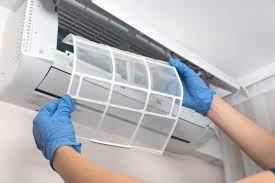
Importance of cleaning air conditioner filter !
- Avoid overheating
- Reduce energy consumption
- Achieve comfortability
- longevity of evaporator coil
- Extend air conditioner lifespan
- Saving maintenance and long run cost
- Lower electricity bill
- Better indoor air quality
- Keeping duct-work cleaned
- Decrease level of allergies
Common Types of Air Filters
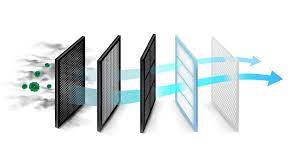
Fiberglass Filters
Fiberglass air filters are disposable and the least expensive type of filter. They do cause less strain on HVAC systems when drawing in air and keep large particles out of your system. However, they do not do such a great job of keeping out dust and other smaller contaminant particles. If you or members of your family suffer from allergies or have respiratory problems, this type of filter may not be powerful enough to help relieve or prevent respiratory problems. It will typically have a MERV 4 rating.
Pleated and Polyester Filters
These filters offer a little more space within the pleats for filtering out dust and debris. It’s a popular design for disposable air filters and a variety of styles are available to choose from. For instance, there is a carbon-infused air filter that removes odors and a microbial-infused style that helps remove allergens. The MERV rating for these furnace filters is between 6-12.
Washable Filters
Washable filters are a reusable type of air filter that can be washed and reused. It is advisable to have 2 air filters when going with this style so the second filter can be installed while the recently cleaned filter has ample time to dry. It is imperative to let the filter completely dry before re-installation to prevent mold from manifesting. Similar to fiberglass filters, the MERV rating for these air filters is between 1 and 4.
Media Air Cleaners
These heavy-duty filters are generally 4-6 inches wide and a professional must install them directly into the duct-work. The average cost ranges from $400-600 for this addition to your HVAC system. Before making the decision to incorporate this type of air filter, be sure to meet with a certified technician as airflow can potentially be reduced in the HVAC unit due to the filter. These air filters have a high MERV rating and can reduce energy efficiency, which could increase your utility bill.
Electronic Air Cleaners
This type of air filter works by putting an electrical charge on air particles that pass through and are trapped by a reversely charged collector. The benefit is that these air filters do not need to be changed, but you do need to clean them every 2-3 months. These filters trap very small particles and are commonly used in hospitals or other healthcare-related buildings.
Electronic air filters are ideal for households that require pristine air quality or for people who have sensitivities to air particles.
Plastic mesh filters
are commonly installed at the return air of most indoor unit of room or window air conditioner. They trapped bigger particles of dust and should be cleaned every two weeks and more frequent if the space being conditioned is polluted.
Electrostatic air filters
are commonly placed in the return air of the air conditioner unit where the air is subjected to high voltage up to 12kV between two plates. The ionized particles are then drawn to the grounded plates. The electronic circuit used to generate the voltage is usually embedded on the control printed circuit board or a separate module.
Carbon and Adhesive filters
are other types used. Carbon type is made of activated carbon that is effective in removing odor causing gases and bacteria. Adhesive type is made of cotton and fiber glass material coated with adhesive oil or liquid which trapped the particles.
HEPA Filters
If you or your family have allergies or other respiratory problems, high-efficiency particulate air (HEPA) filters are recommended. While they are more expensive than fiberglass or pleated air filters, they are the most effective at screening up to 99.97% of dust, pollen, mold, pet dander, viruses, bacteria, and other irritants out of the air. Look for filters that are rated MERV 11 or higher. However, please be aware that the higher the MERV, the more difficult it is for your HVAC system to pull in air. You should check with us to see what MERV is best for your system.
UV Filters
UV filters are used in air cleaners that may be built into your HVAC system. Using ultraviolet light, these filters kill viruses, bacteria, and other microorganisms in the air that passes through them. However, they are not so efficient at removing dust and other contaminants, but they are great if you have concerns over indoor air quality that an air cleaner can address.
Standard Air Filter Rating
The Minimum Efficiency reporting value (MERV) rating stands for Minimum Efficiency Reporting Value and rates the effectiveness of an air filter’s ability to remove a variety of air particles. The scale is 1-20, and the higher the number, the smaller size of particles the air filter captures, increasing efficiency.
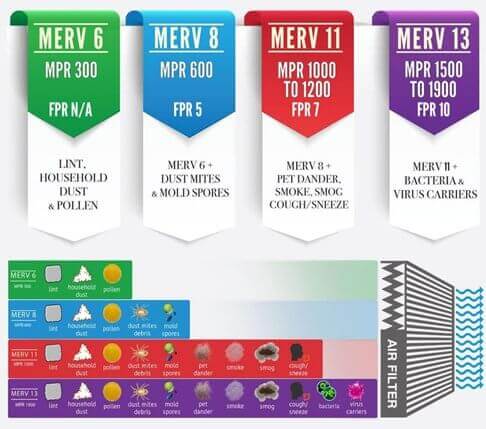
If your household suffers from allergies, we recommend installing an air filter with a minimum MERV rating of 8, which will filter out pet dander, dust mites, and mold spores. Before purchasing an air filter, be sure to check your HVAC system specifications to see what type and size will be compatible.
The materials air filters are made of vary from fabrics to fiberglass. Filters are also rated using the MERV, which was developed by the American Society of Heating and Refrigerating and Air Conditioning Engineers (ASHRAE). The ratings range from 1 to 16 and give you an idea of how well the filter can trap pollutants that are as small as 0.3 microns and as large as 10 microns, with 16 being the most effective.
How to clean your air conditioner filter?
Turn off your air conditioner

Remove the filter
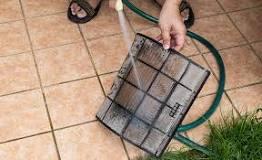
Clean the filter
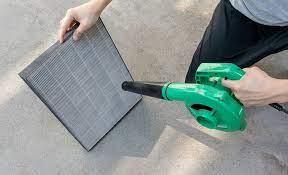
Dry the filter

Air Conditioner Filters!